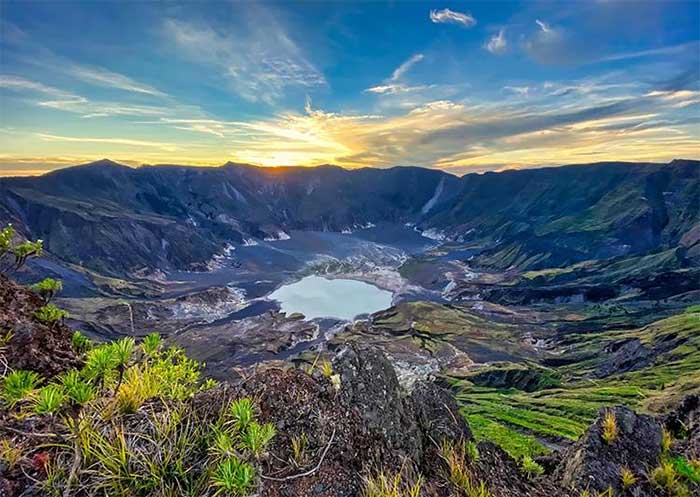What happened in 1816, when Earth saw a year 'without a summer'?
Never before has the world witnessed such a harsh and strange year in terms of weather.
The clear blue sky and golden sunshine and the wonderful long, warm days of summer are an expectation of many people after a long winter. However, for those living in the Northern Hemisphere in 1816, those summer days were missed.
The Year Without a Summer , this year's upheavals spread across the globe. Temperatures have dropped to around 16 to 13 degrees Celsius and as a result, weather patterns around the world are disrupted and disturbed.
In America, warm summers are replaced by winters, and bitterly cold weather persists throughout the year . May can sometimes be a bit chilly under normal conditions, but in 1816 frost persisted in many eastern US states. Snow is still seen in June, while rivers in Pennsylvania remain frozen in July.
Across the Atlantic, Europe suffered torrential rains. In Ireland, it rained non-stop for eight consecutive weeks. US President John Quincy Adams, then ambassador to the United Kingdom and living in London, lamented in his diary the freezing showers and thunder that kept him from leaving his home in early July. .

People suffered countless impacts in the year 1816.
The impact of falling global temperatures is even spreading to Asia, disrupting the normal monsoon period, leading to drought.
Consequences of the event
Due to unseasonal weather, crops in many areas failed. In the US, this is mainly due to frost continuing into the spring. This can also cause many farm animals to die. Meanwhile in Ireland, floods caused by heavy rains ruined the year's potato harvest.
Lack of rain is a problem for crops in Asia, with drought caused by a delayed monsoon season. In many affected areas across the Northern Hemisphere, unsuccessful harvests led to famines that caused many tragedies.
A significant migration of farmers from the eastern United States to the Midwest created a region that became the center of American agricultural activity to this day.
What caused the disaster?
The cause of this unusual weather comes from Sumbawa, an island in Indonesia . There, on April 5, 1815 , the Tambora stratovolcano began to erupt violently.

Tambora crater today.
Volcanic eruptions can affect the planet's climate for months. This can happen when small, light ash particles remain in the stratosphere and block sunlight, leading to a drop in temperature.
About the scale of the Tambora volcanic eruption. This was the most powerful eruption in recorded history. The consequences of the 1816 eruption are believed to be the main cause of the Year Without a Summer.
Overall, 1816 was not a happy year for the world because so many things were greatly affected.
- What happens if the Earth only has a cold season?
- Summer solstice is always on Tuesday
- What if it rained in every corner of the Earth at the same time for a year?
- 2,000-year-old summer castle of the Roman emperor
- Research says that in the autumn you remember to be tough and the summer is easier to focus
- Top 5 best dishes for summer: In addition to duck meat, hot tea, the remaining 3 dishes are also 'dangerous'
- Do you know Earth is less than 50,000 tons per year?
- Summer, which fruit is the best?
- Russian newspaper: UFOs will fly near the Earth in the summer of 2017
- This year the heat may reach 42 degrees Celsius
- Why not buy electronics in the summer?
- Why is hot season 2019 unusually hot?
 'Fine laughs' - Scary and painful torture in ancient times
'Fine laughs' - Scary and painful torture in ancient times The sequence of numbers 142857 of the Egyptian pyramids is known as the strangest number in the world - Why?
The sequence of numbers 142857 of the Egyptian pyramids is known as the strangest number in the world - Why? History of the iron
History of the iron What is alum?
What is alum?